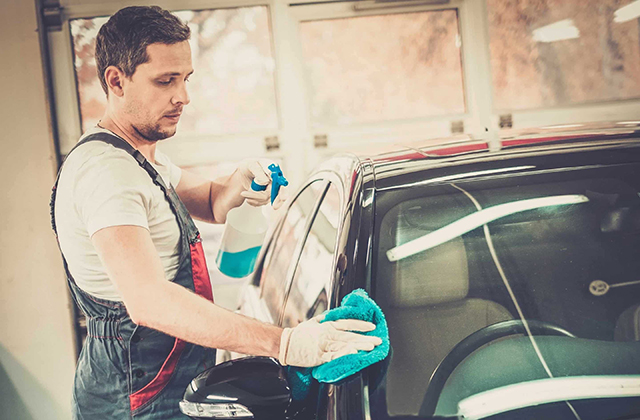Suitable for small intimate groups seeking a quiet dinner and drinks, to larger groups ready to party, our birthday function rooms Melbourne offers an accommodating and lively setting for any birthday occasion. Kids’ birthday parties today are a lot different today than they were when most moms were kids. In many communities, throwing kids’ birthday parties has almost become a competitive sport.
Your kid’s party should be about fun, not competition. And birthday parties should never put kids in the position of comparing levels of party extravagance.
The key to having a great birthday party? First, remember that it’s about your kid-not anyone else’s. Plan your party around your own child’s interests, and what you’re family is comfortable doing.
Start planning the party at least 4 to 6 weeks in advance so you have plenty of time to take care of everything-if that’s what you want to do and are able to do. If you decide to hire a party entertainer or book a birthday party venue, make your calls about three months in advance, to be sure the date and time you want is available.
Here are some of the most common questions that moms ask about planning kids’ birthday parties, and some common-sense answers.
How many kids should I invite?
If the party is for a child under age 5, and parents are invited to stay, the number of kids won’t be a big factor. The parents will supervise their own children, so you’ll be able to concentrate more on yours.
Some experts maintain that kids are old enough to be dropped off at parties once they’re about 5 or 6 years old. By that time, most have been in playgroups, pre-schools, and possibly, kindergarten. That means they should have the social skills they need to play nicely with other kids and have a good time.
The general rule of thumb on how many kids to invite: your child’s age plus one.
What time should I have the party?
The best time for the party also will depend on the guests’ ages. For babies and toddlers, consider naptimes. Scheduling the party so that it ends by noon is probably a good idea. For slightly older children, parties can begin by 1 p.m. or 2 p.m. and end at 3 p.m. or 4 p.m.
How long should the party last?
An hour for kids under age five, and an hour-and-a-half to two hours for older kids should be perfect. State a pick-up time on the invitation, so parents know exactly when to get their young partygoers.
Is there a guideline to choosing party decorations?
Just make everything colorful-Use your child’s favorite color and carry a one-, two-, three-, or multi-color scheme through with balloons, plates, napkins, serving bowls, tablecloth, and goodie bags.
Decorations will also reflect the theme your child chooses. Once you and your child have decided on a theme, the easiest choice is to buy a complete party ware kit. If your child is into, say, pirates, dolls, Disney princess, Hannah Montana, or any sport, there will be an all-in-one package to suit his or her birthday party fantasy. Check out this extensive assortment of party decorations and themed party packs.
What should I serve?
The tiniest tots are easy to please: Having their moms or dads help them to a bit of cake and ice cream will probably make them very happy.
For young kids, small food portions work well. Think cut-up fruit, pieces of cheese, baby carrots, crackers, and miniature muffins.
Another idea is to make popular sandwiches rolled up and sliced to form pinwheels, or cut into shapes using cookie cutters.
For kids over age 7 or so, you can never go wrong with macaroni and cheese, baked ziti, or pizza. Add some salad or cherry or grape tomatoes and sliced cucumbers to give the party fare a bit more color.
If you’re serving pizza, cut the pies into smaller-than-usual slices and let the kids keep coming back for more. Cutting small slices will dramatically reduce waste.
A birthday cake or cupcakes are essential. Decorating cupcakes has become a dual-purpose parent-pleasing activity: It keeps the kids busy and takes care of providing a dessert the kids will love.
What are the best games for young kids?
Little kids will enjoy listening to and singing familiar songs, clapping their hands or following simple hand motions. The stories, songs, and games they know from pre-school will be popular at parties, as well. Ask your child or your child’s teacher for favorites. Have enough activities planned to start a new one every 10 or 15 minutes, if necessary.
A treasure hunt can also work, and easily be customized to fit almost any theme-e.g., the kids search for the pirates’ “gold” or the princess’s “jewels.” Just be sure that moms and dads or other party helpers are there to help the kids as they follow clues and look for the hidden treasure.
Should I hire a party entertainer?
Hiring a party entertainment pro is an increasingly popular option. Party clowns, magicians, and other entertainers can, of course, take charge of all the birthday party activities.
Party pros can lower your hassle and stress levels, because they’re prepared to handle almost any situation. They do this all the time. They’re tuned into the signs that a little girl isn’t engaged, or two boys aren’t getting along, or that all the kids are getting antsy and it’s time to move on to a new activity.
Another option: Bring the party elsewhere. There are plenty of party venues that can keep your child and his or her friends occupied from the second the first guest arrives ’til the last happy child is picked up.
Are there any special party “Do’s and Don’ts?”
A definite “Do” is to let kids be creative. Coloring, painting, putting stickers on objects, making badges, bracelets, decorating inexpensive hats, or working on other craft projects will keep kids amused and happy. In fact, letting young kids create or decorate their own party favors is a great way to keep them occupied during the first 15 or so minutes of the party, when everyone is arriving.
Another “Do” is to have refreshments for the parents, especially if you’ve asked them to stay at the party.
And “Do” be gracious if unexpected siblings show up. Have enough food for a few more people, and one or two extra goodie bags, just in case.
Here’s a big-time “Don’t:” Regardless of the activities you have planned for your child’s birthday party, never let any child feel left out or unhappy because he or she isn’t chosen for a team or is eliminated from a game. Encourage participation, cooperation, and team effort, not individual competition.
Should we open gifts at the party?
There are two schools of thought on opening birthday presents. The first is to wait until after the party is over. Key reasons:
1) you don’t want the party to focus on gifts;
2) it can get boring for everyone to sit there while the birthday boy or girl rips open boxes; and
3) you have a limited amount of time, especially if you’re having the party at a party venue.
The second viewpoint is to open presents while everyone is there. Key reasons: 1) the birthday guest of honor can’t wait to open them; and 2) the kid giving the gift wants to see his or her friend open it-especially if that child helped pick out the present.
Decide what makes you comfortable-just be flexible about it, should circumstances warrant a change of plans.
Should I insist that my child write a “thank-you” note?
Absolutely. Before kids learn to write, it’s appropriate for the parent to write the note and have the child scribble or color something on it. When the child is able to write his or her name, signing the bottom of a mom- or dad-written note is OK.
When kids are older, though, they should understand that written “thank-you” notes are a very meaningful way to let people know that you appreciate their kindness and generosity. Think of thank-you notes not only as part of teaching kids to be well-mannered, but as helping them learn a social lesson that will serve them extremely well throughout their lives.
Carole Jace is a writer for the popular site, CelebratewithStyle.com The site features advice on planning a party for family members and friends, as well as holiday, business, social, and fundraising events.
It offers ideas and advice from experts on food for parties, stylish décor, dress-up fashion, and beauty. It also provides great tips for planning a party for kids, teen events, and wedding-related festivities.
Article Source: https://EzineArticles.com/expert/Carole_Jace/84403
Article Source: http://EzineArticles.com/906659


